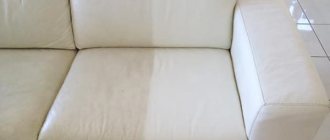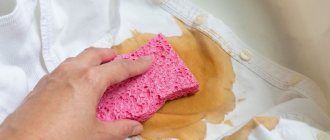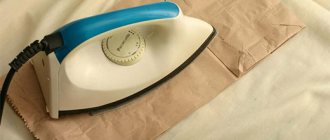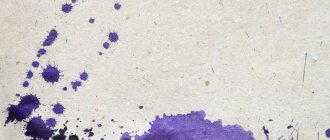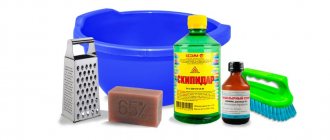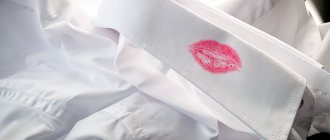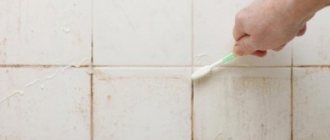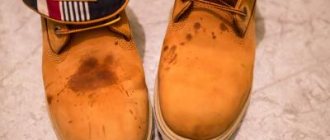- January 13, 2020
- Repair Tips
- Galina Datsenko
Leather is a very durable material that can easily withstand harsh impacts and wear and tear. It has a rich appearance, but requires special care as it is an absorbent material and is susceptible to many types of stains, the removal of which requires a step-by-step approach.
Before removing a stain from the skin, it is necessary to determine its type, which determines the level of difficulty of removal.
When removing stains, care must be taken not to damage the quality of the leather. If you find a stain on your leather item, this guide will provide you with some helpful tips on how to remove it.
How to clean stains from leather furniture?
You want your leather furniture to continue to look amazing for years to come, but it's difficult to protect any piece from stains. When used regularly, water, ink, food and other substances can actually damage the appearance of your furniture. Whether you have a small child who spilled juice on a chair or a guest whose ink pen leaked on a leather sofa, you need to get rid of the stain immediately.
Leave the harsh chemicals in the closet and try these natural home remedies to learn how to remove stains from your living room sofa to how to clean your car's leather seats.
Before you begin, remember to check the furniture manufacturers' directions and also spot test a small hidden area to check for discoloration before applying any cleaning products to the entire piece.
Let's look at how to remove stains from your skin using natural remedies that you probably have at home.
Is it possible to wash genuine leather jackets?
Leather clothes cannot be washed, but there are still exceptions; items made from high-quality, natural material impregnated with a protective composition will withstand infrequent washing. If certain rules are not followed, there is a risk of damaging the item so much that it will be impossible to restore it. Note:
- The recommended method and mode, water temperature are described on the insert from the manufacturer.
- washing is permissible only in case of heavy soiling;
- wet a small area of skin (on the inside of the jacket), wait 15 minutes. If the surface is not deformed, you can start washing;
- choose mild soaps without aggressive substances such as chlorine.
Removing an ink stain
Ink stains on the skin need to be treated promptly because the ink acts as a dye for the skin and cannot be removed if it is completely absorbed. So, whenever you find an ink stain on the surface of your skin, you need to take quick action to get rid of it. Alcohol is usually considered an effective measure for removing stains from both artificial and natural leather. Whether you're working with suede, vinyl, or smooth leather, the process for removing ink stains is the same.
Soak a cotton swab in alcohol. Perform the "spot test" before attempting to remove the ink stain. Find a part of the skin that is relatively hidden to see the effect in advance. Apply a cotton swab of alcohol to a small area of skin and leave for 10 minutes (there shouldn't be a problem, but it's always a good idea to do this test beforehand to be sure).
If the test is successful, apply a cotton swab with alcohol to the skin stain. Gently rub the affected area in a circular motion. You should see the ink stain gradually disappear.
Using leather conditioner, apply a small amount to the affected area. This will restore moisture and radiance to the skin.
If alcohol doesn't work, you can try an alternative method. If you're trying to remove an ink stain from a leather sofa, try using a white eraser directly on the stain. Depending on the type of ink and how long it was left on, the eraser may remove or lighten the stain.
General care recommendations
Frequently cleaning products made from snow-white leather or light-colored materials can lead to rapid wear and tear of your favorite item. Proper care of leather clothing, shoes, bags, and furniture can prevent the need for further washing. To do this, you must adhere to some recommendations and rules:
- New wardrobe items or furniture should be immediately treated with a special cream for white leather or a wax-based water-repellent impregnation. The procedure must be repeated at least once a week. This will help the natural material retain its elasticity, natural shine and color.
- After coming home, taking off your favorite leather clothes or shoes, you should clean them of dust. To do this, use a soft cloth soaked in warm water.
- Leather items should be stored in dry places that are frequently ventilated. It is impossible to cover such products with polyethylene.
- After each cleaning, light leather products are coated with special creams and wiped with egg white or glycerin. This will give things a unique shine and softness.
- If wet cleaning has been done, the item must be hung on a hanger with hangers. It must be strong enough to support the weight of the leather jacket. Thanks to this, the product will dry evenly and will not be deformed.
- To prevent a leather item from becoming wrinkled or shrinking, the room in which clothes or furniture will dry must be thoroughly ventilated before cleaning.
- Before cleaning, it is recommended to wipe the product with a damp cloth to remove dust.
- To wash the skin, you do not need to rub the surface of the material too much. Movements should be smooth, circular, and careful so that scratches do not form on the product. To do this, use only soft sponges, napkins, and rags.
If you follow these simple rules, every housewife will be able to maintain the fat balance of natural leather, preserve the initial paint job, get rid of dirt, and give your favorite item a second life.
Removing liquid stains
- Water stains. They can cause the surface of the leather to become wrinkled and further ruin its appearance. But in many cases the water evaporates and does not cause much trouble. Do not use any heat source to evaporate the water as this may damage the skin. How to remove water stains from leather? You can gently blot any water that has accumulated on the surface and, once it has completely evaporated, remove the marks with leather conditioner. Its use will restore the appearance of the skin and return it to a smooth texture.
- Dark liquid spots. How to remove grape juice, red wine or coffee stains from natural leather? Start by blotting the stain with a slightly damp cloth. A little dishwashing liquid or vinegar diluted in water will help remove coffee stains. To remove a red wine stain, try blotting it with a cloth soaked in a small amount of white wine. You can then cover the area with baking soda and leave it for 20 minutes. Then gently scrub off the baking soda, being careful not to rub it into the surface.
Preparation
Cleaning white leather yourself is quite easy. To avoid the appearance of marks after cleaning procedures, it is recommended to properly prepare the material:
- Hang the jacket or bag on a hanger for a day in a room with high humidity. This will help straighten the product and make it less dry. Thanks to this, it will be possible to deal with contaminants faster.
- Treat the product with a damp sponge or cloth. This will help remove dust. During the procedure, it is recommended to wash the rag in clean water. This will help prevent streaks from occurring.
- Wait until the product dries. Do not dry the item near the radiator or in direct sunlight.
See also
How to clean a pipe in a bathhouse with your own hands, 15 methods and means
Once the skin is dry, you can begin to cleanse it. It is recommended to carry out this manipulation very carefully. Experts do not recommend rubbing the material or treating clean areas.
Removing an oil stain
How to remove a greasy stain from skin? These stains are easy to remove and are not a cause for concern.
- First way. Blot the grease with a sponge or paper towel, then apply a little talcum powder to the affected area and leave overnight. The powder should draw out oil and absorb moisture from within the skin. The next morning, wipe off the talc with a clean cloth.
- Second way. Blot the grease stain with a dry cloth, trying to remove as much grease as possible. Cover the stained area with cornstarch and leave overnight. In the morning, dampen a clean cloth with undiluted white vinegar and wipe off any cornstarch and excess grease.
How to restore a thing to its former beauty
The consequences of washing or cleaning must be eliminated immediately. If allowed by the manufacturer, iron the item, but only through paper or thick fabric. Set the iron mode to “wool” or turn on the power below average. Immediately after ironing, the jacket should not be hung on a trempel, it may lose its shape. How to restore shine:
- soak a small rag in lemon juice and wipe the skin;
- Treat individual small tarnished areas with fresh orange peel;
- use colorless shoe polish.
Dry skin is the first cause of cracks. Apply a little glycerin, castor oil or whipped chicken protein (dense foam) to the sponge, carefully treat all areas of the jacket with it. Sunflower oil cannot be used; the skin will become too oily, become rougher over time, and acquire an unpleasant odor.
If the skin has become very hard after contact with water, a solution of 250 ml of water, 50 grams of salt, 25 grams of glycerin will help restore softness. Mix all the ingredients thoroughly, add the yolk, mix again, apply the solution to a rag and wipe the jacket.
Removing paint stains
If your leather sofa has paint stains on it, you may have trouble removing it. As with any stain, try to soak it up as much as possible while it's still wet, being careful not to smear the paint around. Your best bet is to try using a damp cloth soaked in liquid soap and water to clean the stain and remove the paint. This can be effective for water-based paints. If the paint has dried, you can try to scrape it off as gently as possible, being careful not to scratch the surface of the leather. To do this, you can try using a soft-bristled toothbrush.
If this doesn't work, you can try removing paint stains from leather furniture using a cotton swab soaked in alcohol. Remember that commercial paint remover will remove the pigment from the leather and damage the furniture.
Types of skin pigmentation
Spots on the upper layer of the epidermis vary in diameter, color, and cause of occurrence.
Age-related skin pigmentation
The appearance of pigment spots on the body, hands, and face is associated with age-related changes, disruption of metabolic and hormonal processes in a fading body. Occurs in women after the age of forty. They appear suddenly and, under the influence of ultraviolet radiation, quickly spread throughout the body.
Benign melasma
It appears in girls during adolescence. Associated with malfunctions of the endocrine glands (pregnancy), the use of cosmetics (vaseline, lanolin oil, essential citrus oils), and frequent use of contraceptives. The spots have a large coverage area and uneven edges; capable of merging into one large brown spot in the frontal, temporal region, under the nasal septum.
Pigmentation increases under the influence of unfavorable factors: sun rays, physical activity with profuse sweating
Flat moles
They can be congenital or acquired. Birthmarks are characterized by clear boundaries and small sizes; do not rise above the upper layer of the epidermis. A mole is a collection of melanocytes, cells involved in the production of melanin. A large accumulation of moles or an increase in size is a reason to contact a medical institution for advice from a specialist.
White pigmentation (vitiligo)
The causes of white skin pigmentation are not known. According to scientific research, scientists associate the causes of the appearance of “colorless” epidermal cells with changes in the functioning of the hormonal glands. The spots are white or milky in color (less often pink). Location: shoulders, arms, front surface of the abdomen, face.
Freckles
Brown spots (sometimes with a reddish tint) appear seasonally: at the first rays of the sun, freckles cover the face and shoulders; in the cold season they disappear on their own. They are more common in red-haired people with fair skin and blondes. Brunettes can also become “kissed” by the sun when sunbathing regularly.
Do general cleaning
The best way to clean the entire surface of leather furniture is to mix 2 parts white vinegar with 1 part olive oil in a spray bottle and shake well. To reduce the smell of vinegar, you can add a few drops of aromatic essential oils. Spray the contents liberally over the entire surface. Use a soft brush to gently scrub problem areas. Then use a dry paper towel to wipe off any excess oil from your skin.
Try a natural skin cleanser such as coconut oil. Use a clean, dry cloth to rub the oil into the leather of your chair or sofa in a circular motion. The leather surface regains its shine and gets rid of minor scratches and fading.
Before you try any method, check the information that came with your furniture to see if there are any tips or warnings about cleaning products not to use on your furniture.
And if you are still not sure about cleaning leather furniture from stains yourself, seek help from a professional.
A radical approach - home washing
It is known that it is not recommended to wash leather items, since excess moisture causes things to lose their shape and their presentability. But when there is no other choice, washing becomes the last saving solution. To wash a leather jacket yourself, you can resort to two methods:
Drying leather products is carried out in a dark place. To prevent the jacket from losing its shape, place it on a terry towel. Place dry towels inside and also in the sleeves. When most of the moisture has been removed, hang the jacket on a hanger and dry it completely.
